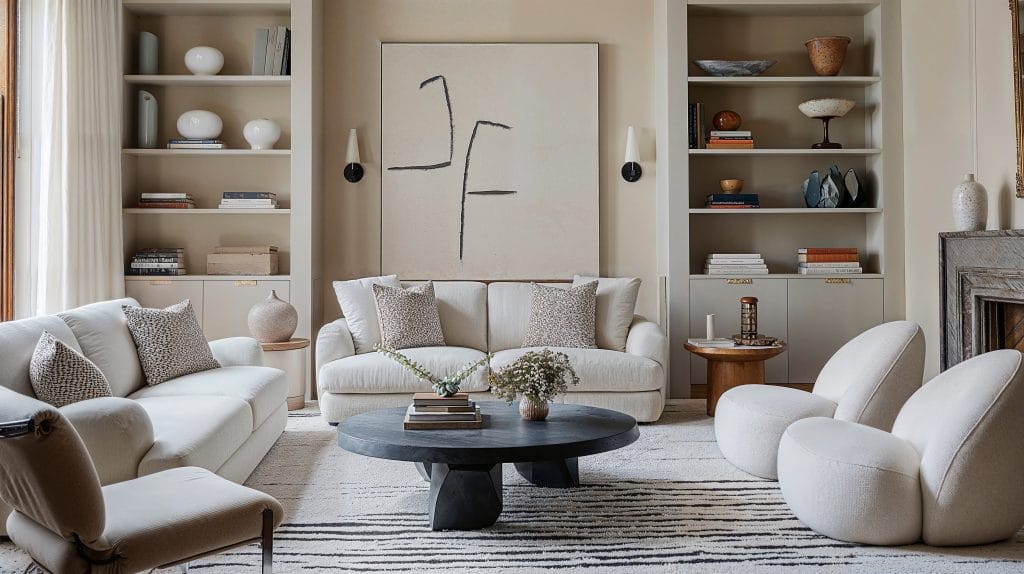Transform Your Home With Vital Concepts of Interior Style and Appearances
By understanding the impact of shade concept and the importance of texture and patterns, one can develop areas that are not just aesthetically attractive but additionally deeply individual. Achieving this balance entails even more than plain decor; it incorporates a critical arrangement and an eager understanding of how each element communicates within an area.
Recognizing Color Theory
Shade concept is an essential aspect of interior decoration that considerably affects state of mind, perception, and overall aesthetic. Recognizing the principles of color concept allows developers to create spaces that reverberate emotionally with owners while satisfying useful demands (luxury interior design). Shades can be categorized right into three main kinds: primary, second, and tertiary. Each classification plays an essential duty in developing harmony within a room.
The mental influence of colors is extensive; warm hues such as reds and oranges evoke power and heat, while awesome tones like blues and environment-friendlies advertise calmness and harmony. The usage of corresponding shades enhances visual rate of interest, producing striking contrasts that can raise an area's charm.
Neutral shades, on the other hand, work as a versatile backdrop, allowing various other layout elements to radiate. It is important to consider factors such as lighting and the room's function when selecting a color palette, as these can alter the perception of shades throughout the day.
Inevitably, a well-considered shade system can change a room, promoting a sense of comfort and style that aligns with the residents' preferences. Proficiency of shade theory is, for that reason, a crucial skill for any interior developer intending to create unified and welcoming settings.
Accomplishing Balance in Design
Exactly how can designers attain a sense of stability in their rooms? Attaining balance in layout is essential to developing harmonious insides.
Asymmetrical balance, on the other hand, counts on differing components that still accomplish a natural look. This strategy permits more dynamic and informal setups, offering interest while maintaining stability. By meticulously picking differing sizes, colors, and textures, designers can create an aesthetically engaging area that feels balanced yet energised.
Radial balance highlights a central focal point with components emitting outside. This design is generally seen in round layouts, where furniture and style produce a natural surround that attracts the eye inward.
Inevitably, achieving equilibrium requires thoughtful consideration of range, proportion, and the partnerships in between aspects. interior design firms. By masterfully applying these equilibrium concepts, designers can transform areas into atmospheres that really feel both aesthetically pleasing and functionally unified, enhancing the total experience for residents
Value of Spatial Understanding

A keen feeling of spatial recognition enables designers to identify centerpieces within an area, guiding the visitor's focus to vital features while keeping a total sense of unity. It additionally helps in the strategic placement of illumination, which can drastically affect the assumption of area and mood. Understanding spatial relationships allows the developer to provide to the details demands of citizens, making certain that each area offers its intended purpose without jeopardizing aesthetics.
Ultimately, spatial understanding is important for optimizing the potential of any type of indoor room. By thoroughly thinking about the interaction in between measurements, design, and function, developers can produce atmospheres that not only satisfy useful needs however additionally stimulate a sense of comfort my site and charm, boosting the general living experience.
Integrating Structure and Patterns
Welcoming a diverse variety of appearances and patterns can considerably improve the aesthetic and tactile allure of an indoor area. The critical use numerous products-- such as wood, metal, fabric, and stone-- develops depth and interest, making a room feel more welcoming and vibrant. For circumstances, incorporating smooth surface areas with harsh structures can develop a balance that attracts the eye and involves the detects.
When incorporating patterns, think about both scale and repetition. Big patterns can function as focal points, while smaller sized, subtle styles can match various other elements without overwhelming the room. Layering patterns, such as pairing floral cushions with striped tosses, includes intricacy and a feeling of harmony if carried out attentively.
It is likewise vital to preserve a cohesive color palette, guaranteeing that structures and patterns collaborate instead than complete for interest. By choosing a few key textures and patterns, you can develop a merged visual that mirrors your personal design while enhancing the total atmosphere of the space. Ultimately, the careful consolidation of these elements can change an ordinary space into an innovative atmosphere abundant with character and warmth.
Individualizing Your Area
Creating a room that shows your personality is essential to attaining an absolutely inviting setting. Customization in interior layout enables you to instill your distinct design and rate of interests right into your home, transforming it from a plain sanctuary right into a shelter that talks to that you are. Begin by selecting a shade palette that reverberates with your emotions-- bold tones can stimulate, while soft tones use serenity.
Include artwork and style that mirror your interests, whether it be travel, nature, or abstract principles. Displaying individual collections, such as publications, photos, or keepsakes, can evoke treasured memories and produce focal factors within a space. In addition, think about customizing functional pieces, like upholstered furniture, to straighten with your aesthetic choices.

Conclusion
To conclude, the change of a home with the crucial principles of interior decoration and aesthetics requires a thorough understanding of color theory, balance, spatial understanding, structure, and customization. Each component adds considerably to creating a harmonious and practical living atmosphere - Architecture Firm. By attentively incorporating these concepts, people can boost the aesthetic allure and emotional vibration of their rooms, ultimately promoting a home that shows special identifications while supplying convenience and usefulness